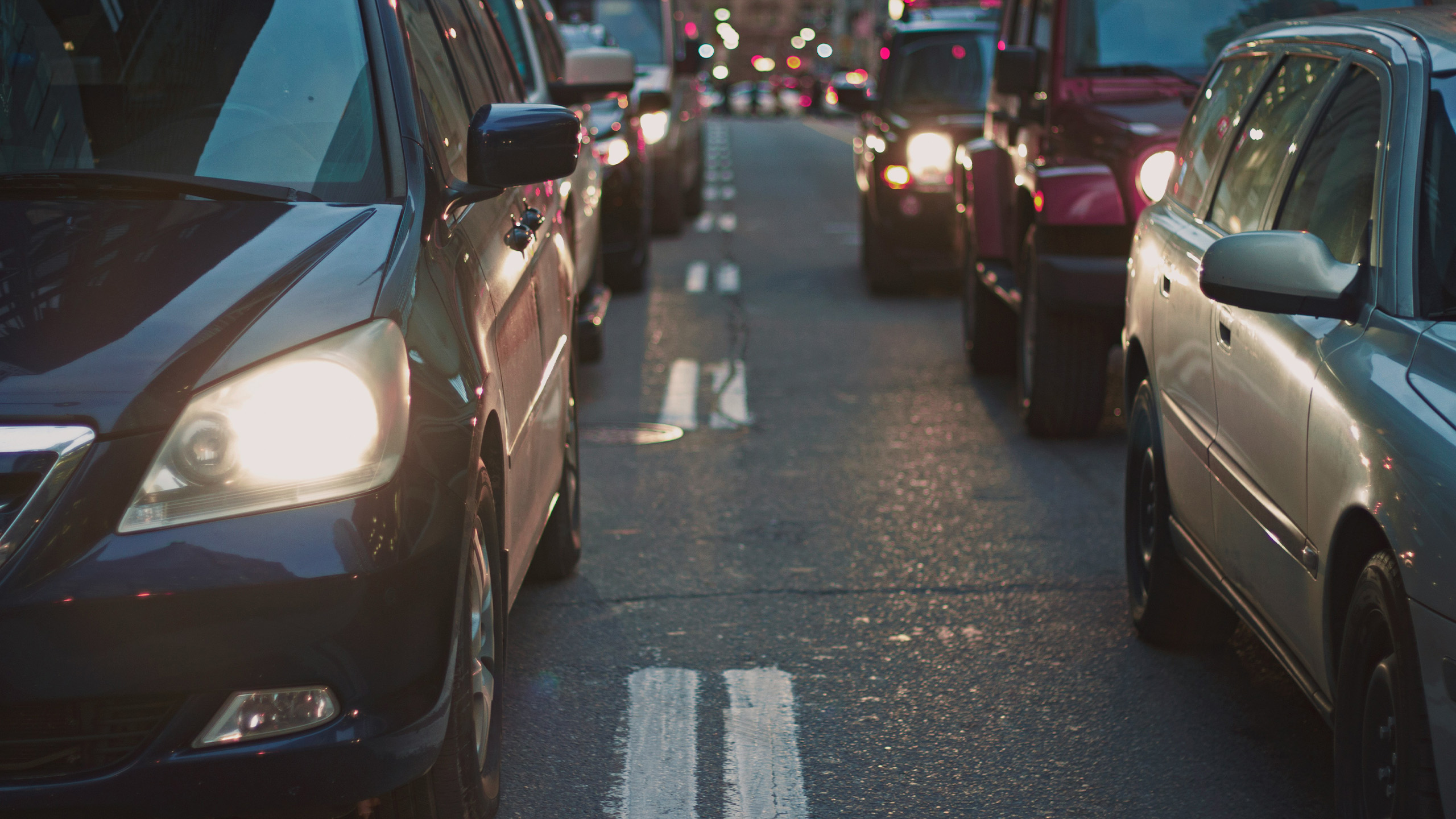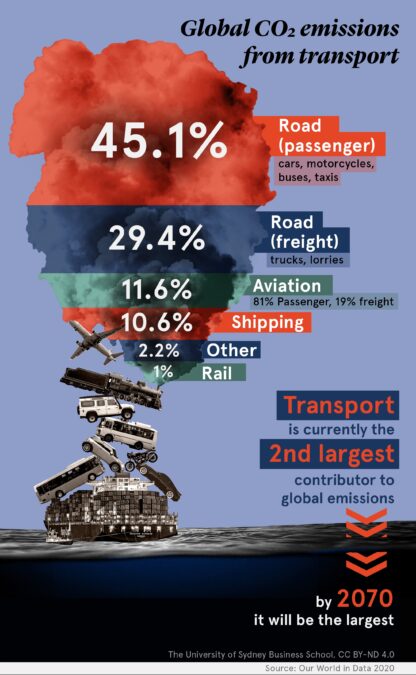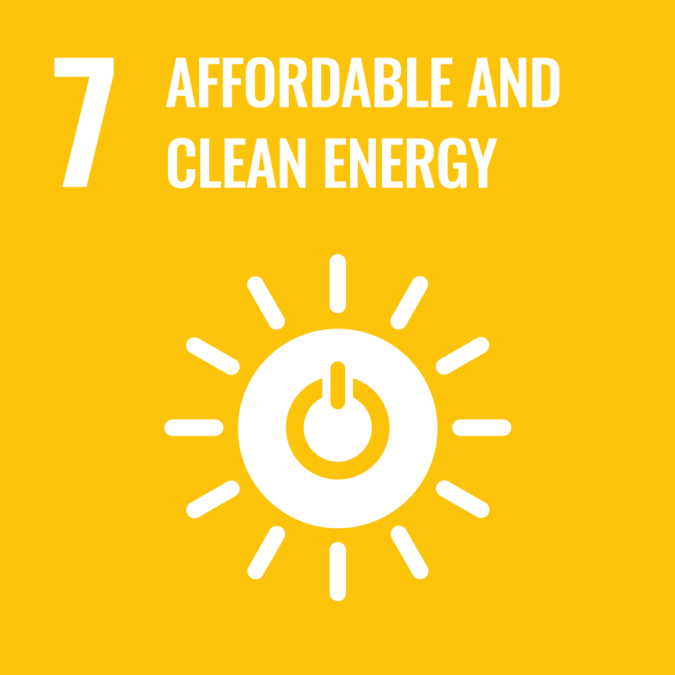
SDGs by 2030 – are we on track?
Transitioning to net zero emissions needs a new supply chain partnership
Some 20 million vehicles use Australian roads each year. Transport is the third highest greenhouse gas emitting sector in Australia, accounting for 19 percent of all national emissions.
Taking to the roads are 77,000 registered buses, more than 600,000 trucks, and 15 million private cars.
Australia has committed to net zero emissions by 2050, so transferring our extensive public and private transport modes to zero emissions is a big part of that journey.
The emphasis is on transition to clean energy for cars, buses, and trucks, and to date the The Institute of Transport and Logistics Studies (ITLS) team have contributed to the development of alternative transition pathways in respect of the full life cycle effects of battery electric and hydrogen conversion for buses and trucks.

The greatest challenge is having a governance framework that creates unambiguous policy settings developed by government, that provide the clarity needed for industry to invest in future clean energy solutions.
There needs to be greater dialogue between procurement agencies in government and the private sector, noting that most expertise in energy technology, manufacturing, and implementation is in the private sector. A critical role for government is to build trust in a Supply Chain Partnership Contract (SCPC), by recognising the diverse set of roles, and risk sharing, that can be delivered by private sector partnerships that negotiate or tender with government to deliver outcomes aligned with achieving the net zero goal.
This would involve a paradigm shift from traditional contracting (i.e., contracts between government and bus operator, or between a truck business and truck manufacturer), to management agreements between government and consortiums. This new arrangement would account for the entire supply chain: energy provision generation and distribution, original equipment manufacturer, asset owners, and operators. This would give the government certainty of service continuance in a net zero emission future for all transport modes.
With benefits accruing to energy, infrastructure, and bus/truck providers in particular, there is a case to be made for sharing the risks with all parties who stand to benefit from the transition to clean energy.
This also aligns well with the real reason for contracting – to get the best value for the taxpayer’s dollar.
Sustainable Development Goal (SDG) target addressed:
Target 7.3 By 2030, double the global rate of improvement in energy efficiency
Resources
What is your understanding of appropriate transition strategies in moving to clean and green energy in the transport sector?
Books
- Khajepour, A., Fallah, S. & Goodarzi, A. 2014. Electric and Hybrid Vehicles – Technologies, Modeling and Control: A Mechatronic Approach, West Sussex, United Kingdom, John Wiley & Sons Ltd.
Articles
- Brown, A. L., Sperling, D., Austin, B. & al., e. 2021. Driving California’s Transportation Emissions to Zero. The University of California Institute of Transportation Studies.
- Hensher, D.A., Wei, E. and Liu, W. 2021. Battery Electric Vehicles in Cities: Measurement of some impacts on traffic and government revenue recovery, Journal of Transport Geography, 94,103121.
- Hensher, D. A., Wei, E., & Balbontin, C. 2022. Comparative assessment of zero emission electric and hydrogen buses in Australia. Transportation Research Part D, 102 (103130), 1-17.
- Hensher, D.A. (2022) Is it time for a new bus contract procurement model under a zero emissions bus setting? Transportation Research Part A, 163, 80-87.
- Hensher, D.A. and Wei, E. A Comparative Assessment of Zero and Low Emission Strategies for the Australian Truck Fleet, Working Paper ITLS-WP-22-14
Podcasts and videos
Websites
- EPA: Fast Facts on Transportation Greenhouse Gas Emissions
- The Verge: EVs ‘are not enough’: Polestar and Rivian urge more drastic climate action
- Redwood Materials
- The Verge: Redwood Materials announces $3.5 billion EV battery recycling plant in South Carolina
- Our World In Data: Cars, planes, trains: where do CO₂ emissions from transport come from?
David Hensher is Professor of Management, and Founding Director of the Institute of Transport and Logistics Studies (ITLS): The Australian Key Centre of Teaching and Research in Transport Management in The Business School at The University of Sydney.
Share
We believe in open and honest access to knowledge. We use a Creative Commons Attribution NoDerivatives licence for our articles and podcasts, so you can republish them for free, online or in print.




